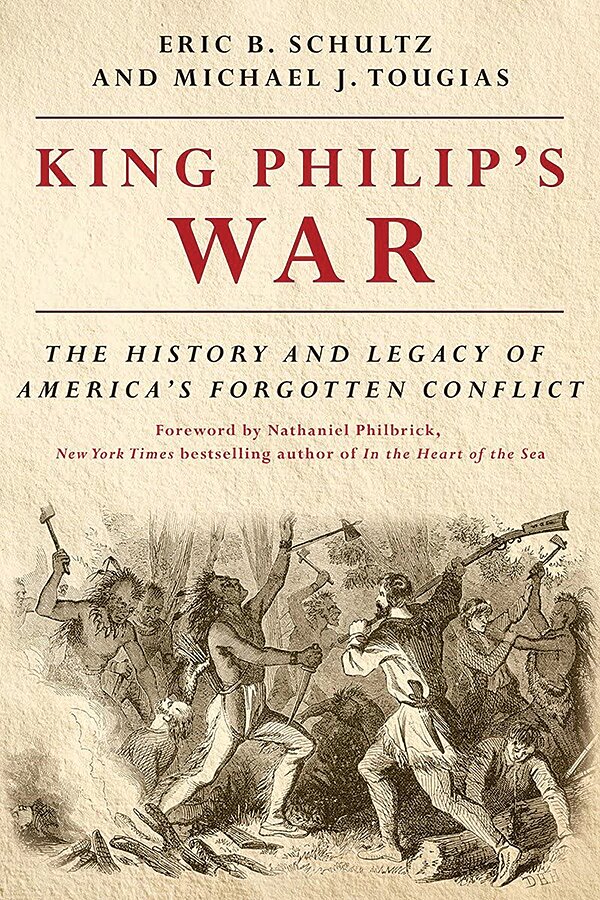A reminder that we walk through history in the East Bay
Here in Bristol County, we walk on history every day, sometimes oblivious of those whose footsteps trod this earth before us. Some of those were American Indians and colonial settlers, who first lived in peace, before resorting to war in an effort to seize the native land wanted for expansion.
This item is available in full to subscribers.
Please log in to continue |
Register to post eventsIf you'd like to post an event to our calendar, you can create a free account by clicking here. Note that free accounts do not have access to our subscriber-only content. |
Day pass subscribers
Are you a day pass subscriber who needs to log in? Click here to continue.
A reminder that we walk through history in the East Bay
‘King Philip’s War: The History and Legacy of America’s Forgotten Conflict’
By Eric Schutz and Michael Tougias
Here in Bristol County, we walk on history every day, sometimes oblivious of those whose footsteps trod this earth before us. Some of those were American Indians and colonial settlers, who first lived in peace, before resorting to war in an effort to seize the native land wanted for expansion.
Roger Williams showed great respect toward the Indian population and deplored the “depraved appetite … for great portions of land” among the colonists. Initially, ties were formed between Massasoit, leader of the Pokanoket, whose domain was Mt. Hope Peninsula in Narragansett Bay (now Bristol and environs), and the English who traded European-made goods for fur pelts.
One primary figure who appears throughout the book was Benjamin Church, a dashing figure, the only white man present at three of the wars waged by the United Colonies in the Rhode Island area. Battles occurred in Assonet (Little Compton), Kingston (Battle of the Great Swamp), Patuxet (Warwick and Cranston), Cumberland, Central Falls, Tiverton, as well as No. Attleboro, Old Dartmouth, Swansea, Hingham, Bridgewater, Wrentham, Braintree, Woburn, Taunton (Cohannit to the Indians), etc. in nearby Massachusetts.
Following these battles, Church relentlessly pursued King Philip, whose camp was located in present day Bristol Narrows. First, on what is presently the Taunton/Providence turnpike (Rt. 44), he captured Philip’s chieftan, Anawam, whom he described as a “great soldier, a valiant Captain” under Massasoit. Upon capture, Anawam presented Church with one of Philip’s belts – 9” broad, wrought with black and white wampum, intricately woven with birds and beasts, which hung from his shoulders to his ankles. Philip favored these belts, but anthropologists have never located any of them.
During his flight, Philip sought out the squaw sachem Weetamoe at her camp in the heights overlooking Mt. Hope Bay. During an attack, Weetamoe escaped and attempted to cross the Taunton River, where her naked body was found. Her corpse was mutilated, head decapitated, and placed on a pole paraded through the streets for public display on Taunton Green.
A large factory in Fall River near the Taunton River is named in her honor – a dubious tribute.
Brutality and carnage existed on both sides. Philip’s wife and nine-year-old son were captured and sold into slavery, which was the common plight of those natives who were not killed. Others, like Tispaquin, Philip’s brother-in-law, despite Church’s guarantee of safety, was beheaded; and Monoco, who surrendered with a promise of amnesty, was hung.
Eventually Church found Philip, who was shot, decapitated, quartered, his head marched through Plymouth. His hand was given as a token to the Indian Alderman who shot him.
By 1774, only sixteen Indians were left in Bristol; by 1785, only two. Some escaped to Gay Head in Martha’s Vineyard or Mashpee on Cape Cod, the only places relatively untouched by the war, and continued their traditional way of life that had been largely destroyed.
After surviving all these skirmishes – including one battle in which he was wounded three times – Benjamin Church died as a result of a fall from his horse.
An interesting portion involves the capture of Mary Rowlandson, who was kept hostage for three months, enduring hunger, exhaustion, and cold as she was moved with the Indians from Braintree to New Hampshire, her infant child dying in her arms during the arduous trek.
Upon release, she wrote of her experiences.
In this “great epic of colonial literature,” all is described in minute detail – the ambushes, attacks, sieges upon settlements and towns, based on first-hand, written accounts of Increase Mather, Benjamin Church, and other actual participants in these wars. Maps also provide an easy way to follow the routes of hiding and escape.
Although these events occurred three centuries ago, the authors Schutz and Tougias make these characters and battles come alive on the page. Also helpful are colonial depictions and illustrations of the major participants and events, which are stored at the Heffenreffer Museum of Anthropology and the John Carter Brown Library – all part of our own fascinating local history.
Donna Bruno is a prize-winning author and poet recently recognized with four awards by National League of American Pen Women.






